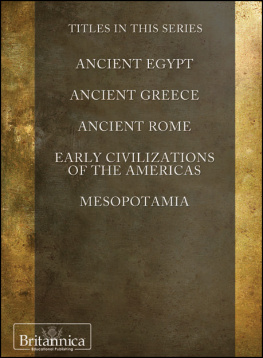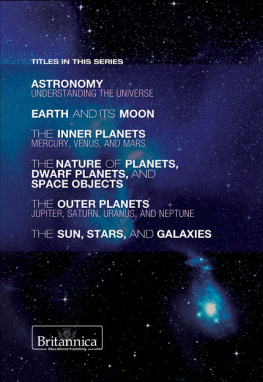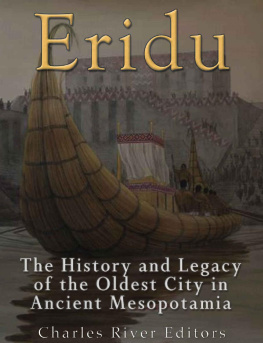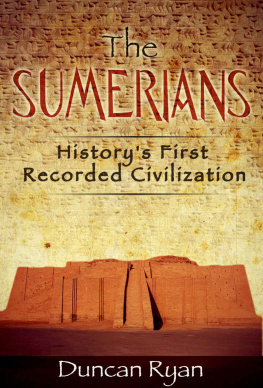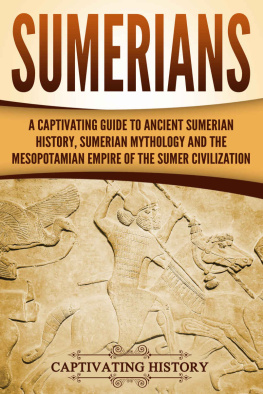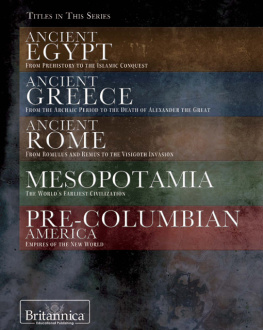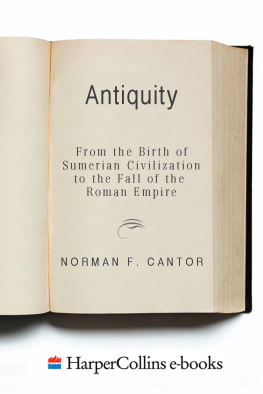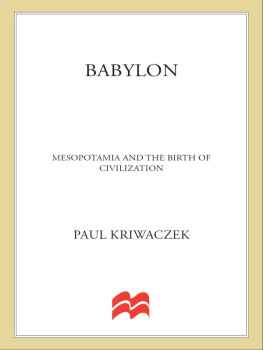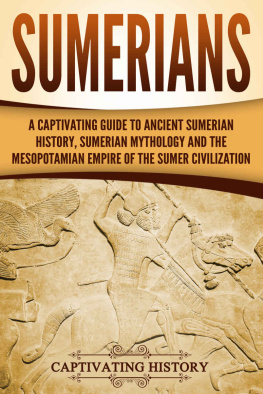MESOPOTAMIA
ANCIENT CIVILIZATIONS
MESOPOTAMIA
Edited by Sherman Hollar

Published in 2012 by Britannica Educational Publishing
(a trademark of Encyclopdia Britannica, Inc.)
in association with Rosen Educational Services, LLC
29 East 21st Street, New York, NY 10010.
Copyright 2012 Encyclopdia Britannica, Inc. Britannica, Encyclopdia Britannica, and the Thistle logo are registered trademarks of Encyclopdia Britannica, Inc. All rights reserved.
Rosen Educational Services materials copyright 2012 Rosen Educational Services, LLC.
All rights reserved.
Distributed exclusively by Rosen Educational Services.
For a listing of additional Britannica Educational Publishing titles, call toll free (800) 237-9932.
First Edition
Britannica Educational Publishing
Michael I. Levy: Executive Editor, Encyclopdia Britannica
J.E. Luebering: Director, Core Reference Group, Encyclopdia Britannica
Adam Augustyn: Assistant Manager, Encyclopdia Britannica
Anthony L. Green: Editor, Comptons by Britannica
Michael Anderson: Senior Editor, Comptons by Britannica
Sherman Hollar: Associate Editor, Comptons by Britannica
Marilyn L. Barton: Senior Coordinator, Production Control
Steven Bosco: Director, Editorial Technologies
Lisa S. Braucher: Senior Producer and Data Editor
Yvette Charboneau: Senior Copy Editor
Kathy Nakamura: Manager, Media Acquisition
Rosen Educational Services
Alexandra Hanson-Harding: Editor
Nelson S: Art Director
Cindy Reiman: Photography Manager
Matthew Cauli: Designer, Cover Design
Introduction by Alexandra Hanson-Harding
Library of Congress Cataloging-in-Publication Data
Mesopotamia / edited by Sherman Hollar.1st ed.
p. cm.(Ancient civilizations)
In association with Britannica Educational Publishing, Rosen Educational Services.
Includes bibliographical references and index.
ISBN 978-1-61530-575-9 (eBook)
1. IraqCivilizationTo 634Juvenile literature. I. Hollar, Sherman.
DS71.M545 2011
935dc22
2011007580
On the cover, page : An copy of a vintage photo of a winged human-headed bull from the Palace of King Sargon II, in what is now Khorsabad, Iraq. Manuel Cohen/Getty Images
Pages www.istockphoto.com/Lebazele; back cover, remaining interior background image Shutterstock.com
CONTENTS




INTRODUCTION

I n approximately 1750 BC the Babylonian king Hammurabi had a shiny black basalt stela (pillar) placed in the capital city of Babylon. This astonishing object contained nearly 300 laws. By todays standards, some of them seem shockingly cruel, such as number 195: If a son strike his father, his hands shall be hewn off. Or 196: If a man put out the eye of another man, his eye shall be put out. Some even seem downright unfairif a patient died during surgery, according to law 218, the doctors hands would be cut off.
It can be hard to believe that this code of laws was a great advance in human civilization. But Hammurabi was saying, in effect, that the king does not hold all the power. People have a right to live in a society where clear laws apply to everyone.
It is not surprising that this innovation in legal thought came from a land where so much change had come before. After all, Babylonia was located in Mesopotamiathe home of the worlds first civilizations. MesopotamiaGreek for between riversis located between the Tigris and the Euphrates rivers, in what is now Iraq. These rivers would overflow each year, leaving behind enriched soil. Starting around 10,000 BC, wandering tribes-people began to grow crops on the fertile land. They gradually stayed in one place, sowing seeds and domesticating animals. Towns, then cities, began to grow.
Mesopotamia is located at the crossroads between Asia, Africa, Europe, and the Arabian Peninsula. That allowed the people of this region to trade grain for other goods and get new ideas from other peoples.

A group of schoolchildren visit the site of Ancient Babylon in 1998. Karim Sahib/AFP/Getty Images
A sense of these lively, vivid people comes down to us from their writing. They engraved wedge-shaped letters on small clay tablets in the worlds earliest known form of writing, cuneiform. They wrote great stories in cuneiform. They also had a strong sense of private property and would hire scribes to write contracts and keep documents about every object they owned, including items as small as shoes.
In this volume you will learn about four major Mesopotamian civilizations.
The first was Sumer, which began about 3300 BC. The Sumerians contributed to the development of the calendar, metalworking, the wheeled cart, and the potters wheel. They also created the classic Epic of Gilgamesh.
The second great empire youll learn about is Babylonia. The Babylonians added to the knowledge of astronomy, mathematics, and law. Their greatest king, Hammurabi, came to rule in about 1792 BC. Aside from his laws, Hammurabi is credited with expanding his empire.
In about 1400 BC the Assyrians of the north freed themselves from Babylons control. Fierce and warlike, they were the first to use horses as cavalry. They built roads and organized a mail service for communication. Despite their ferocity, their art and architecture were magnificent. The Assyrian king Sargon II built a 1,000-room palace near Assyrias capital, Nineveh. Huge human-headed winged bulls and lions, carved in alabaster, guarded the gates of Assyrian palaces and temples. The Assyrians also preserved cuneiform texts in great libraries.
Next, the Chaldeans took over and rebuilt Babylon into a rich and gorgeous city starting around 606 BC. An example of the citys beauties was the Hanging Gardens of Babylon, an ancient wonder of the world. The Chaldeans also made progress in astronomy and math. But in 539 BC, they became a part of the Persian Empire.
The people of ancient Mesopotamia made vital contributions to a broad range of fields, including government, law, literature, architecture, and astronomy, among many others. Perhaps Hammurabis rule seems harsh, but the idea of sharing a code of laws is deeply ingrained today in every civilized society. For that, we owe a debt to the people of Mesopotamia.
CHAPTER 1
MESOPOTAMIATHE BIRTHPLACE OF CIVILIZATION

T he area between the Tigris and Euphrates rivers in what is now Iraq is the site of ancient Mesopotamia, birthplace of the worlds first civilizations. The name is Greek for land between the rivers. As the muddy streams flooded and receded, their silt built a plain with rich soil, ideal for agriculture. Tradition locates the biblical Garden of Eden in Mesopotamia.
Next page
